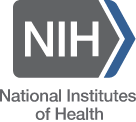Special Emphasis Panel on Neuronal and neurovascular injury, BBB and Clearance – ZRG1 CN-81
The SEP CN-81 is a recurring SEP that will review application on neuronal and neurovascular injuries across lifespan. Topics reviewed include neurovascular remodeling following injury, dysfunction or damage to the blood-brain barrier (BBB), and impairment of clearance pathways such as the glymphatic and lymphatic systems.
Applications considered by CN-81 may address, but are not limited to, the following areas pre-clinical, translational and clinical studies on neuronal injury and neurovascular disorders. These may include model development, mechanisms (genetic, epigenetic and cellular) underlying neurovascular disorder, imaging studies to elucidate pathology.
Review Dates
Topics
- Vascular injury-related neurological disorders, neurovascular remodeling, and underlying immune responses Development of neuroprotective strategies, therapeutic interventions, and therapeutic evaluations targeting neurovascular disorders and neuronal injury.
- BBB damage and dysfunction in the context of neurological disorders, including studies in humans or animal models on BBB integrity and its role in drug delivery and uptake, as well as triggers of BBB breakdown in neurovascular diseases.
- Dysfunction of clearance pathways, including the glymphatic and lymphatic systems, in neurological disorders across all stages of life.
- Development and validation of serum and imaging biomarkers related to neuronal injury and neurovascular disorders.
Shared Interests and Overlaps
There is substantial shared interest with Brain Injury and Neurovascular Pathology (BINP) Study section. Both panels review applications on pre-clinical and translational injury and neurovascular disorders. BINP primarily focuses on mechanistic aspects and model development of these areas while CN-81 primarily reviews translational and preclinical studies.
There is substantial shared interest between Brain Injury and Neurovascular Disorders (BIND) study section. In reviewing applications that focus on neurovascular disorders. While BIND will review clinical studies oncognitive impairment and neurovascular disorder and primarily reviews applications on human subjects/specimens, CN-81 can review applications that study these areas in pre-clinical models. CN 81 can also review modulation of neurological diseases/disorders by glymphatic system (or more generally autonomic dysfunction) in animal models.
There is some shared with Developmental Brain Disorder Study section (DBD) in reviewing applications on pediatric population. While studies on pediatric brain development and injury is reviewed in DBD, some preclinical model development and animal experimental studies can be reviewed in CN-81.
There is shared interest between Clinical Neuroplasticity and neurotransmitters (CNNT) Study Section in reviewing neuronal injury applications. Applications that emphasize on understanding the basic mechanisms and pathologies of epilepsy, epileptogenesis, spinal cord injury, Parkinson’s disease neurodegeneration and neuropathy are reviewed in CNNT. Applications on neuronal injury and neuropathy that have more therapeutic or translational focus can be reviewed in CN-81.
There is shared interest between the Special Emphasis Panel BN-91 and CN-81 in reviewing applications related to BBB and clearance. While BN-91 will review applications that stress on cellular and molecular mechanisms of BBB and clearance, CN-81 will emphasize on pre-clinical, clinical and therapeutic studies in these topics.
There is shared interest between the Special Emphasis Panel AN-55 on applications are the on glymphatic system dysfunction. AN-55 reviews applications on A-beta and other toxic protein clearance including glymphatic system dysfunction in ADRD and neurodegeneration while CN-81 reviews application on dysfunction of glymphatic system with respect to neuronal and neurovascular injury.

